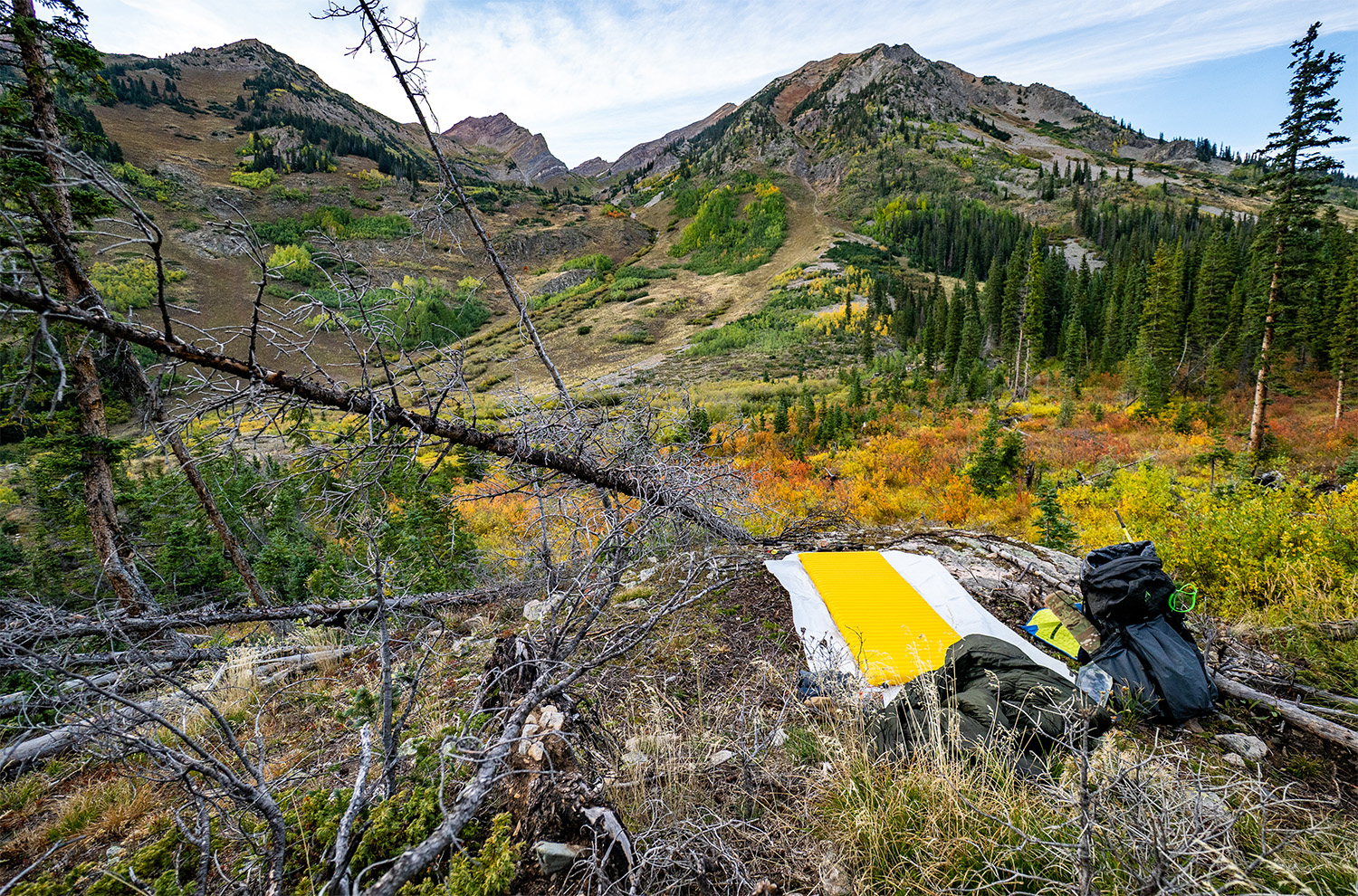
Intro
Most of our reviews are pretty long — and take a long time to produce — because we want to provide enough info for you to determine whether the gear we tested will work well for you.
But we get asked to check out an increasingly wide range of products, and sometimes, we just want to tell you about something we’ve been using and loving lately.
That’s where this monthly series — Stuff We Like — comes in. It’s where we keep you current on a broad range of things we’re digging. Check out this month’s submissions, and let us know if there’s any gear you’ve been loving!
Kids Ride Shotgun Shotgun Pogies
MSRP: $64.99
Kristin & Linden Sinnott: My family and I are fortunate to live in a place where biking to school, town, and just about anywhere else is both safe and convenient. Our commute is about 4 miles (6.4 km) one way, with 900 feet (274 m) of elevation gain, and 95% of the ride is on a paved recreation path. When I say “convenient,” I should clarify that we’re riding an e-cargo bike. It’s been a game-changer for us, and we’ve logged more than 1,300 miles (2,092 km) on it over the past few years.
Life in the mountains means savoring a short window of truly perfect biking weather, and a much longer stretch where layering up (or at least having multiple layers within reach) is the only way to stay comfortable.
Keeping my son’s hands warm during our spring and fall bike commutes has always been tricky. Gloves never seemed to cut it, and cold hands usually lead to a frigid and grumpy child. Enter the Shotgun Pogies. We got a pair late last spring, and they now live on the bike full-time.
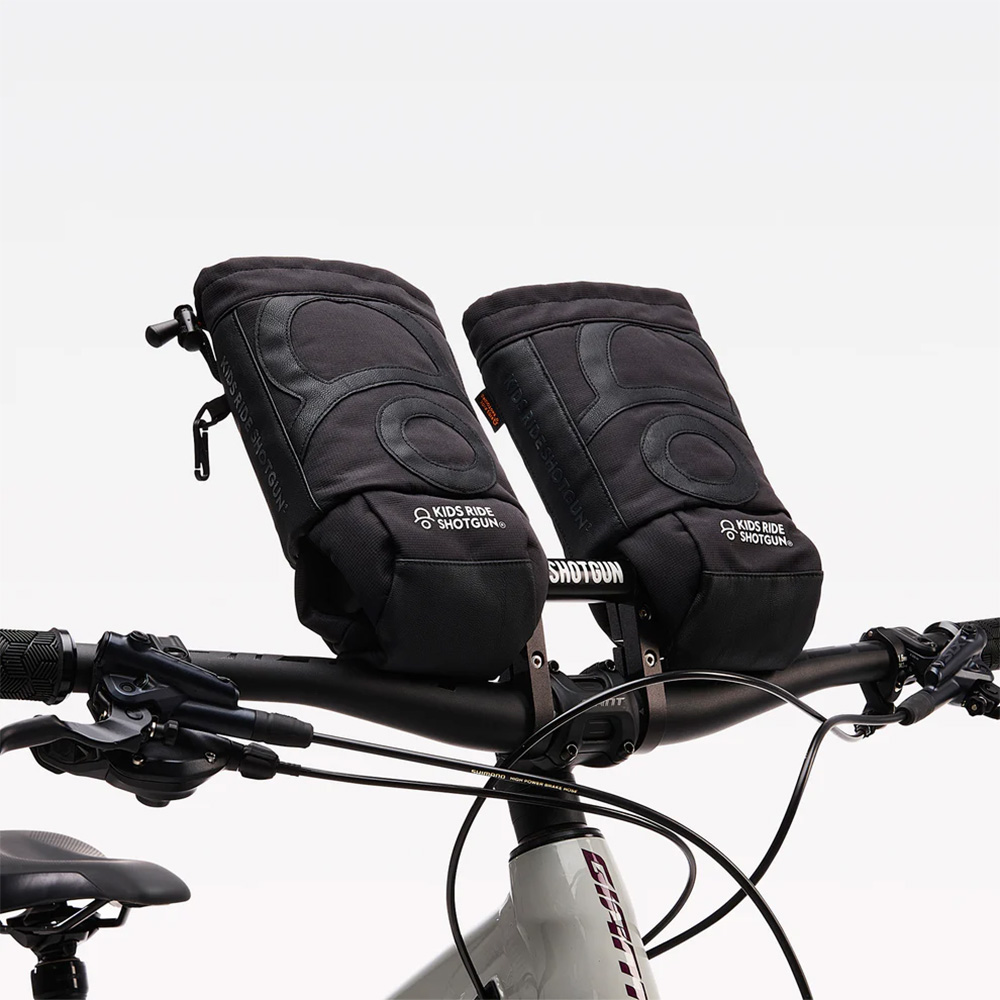
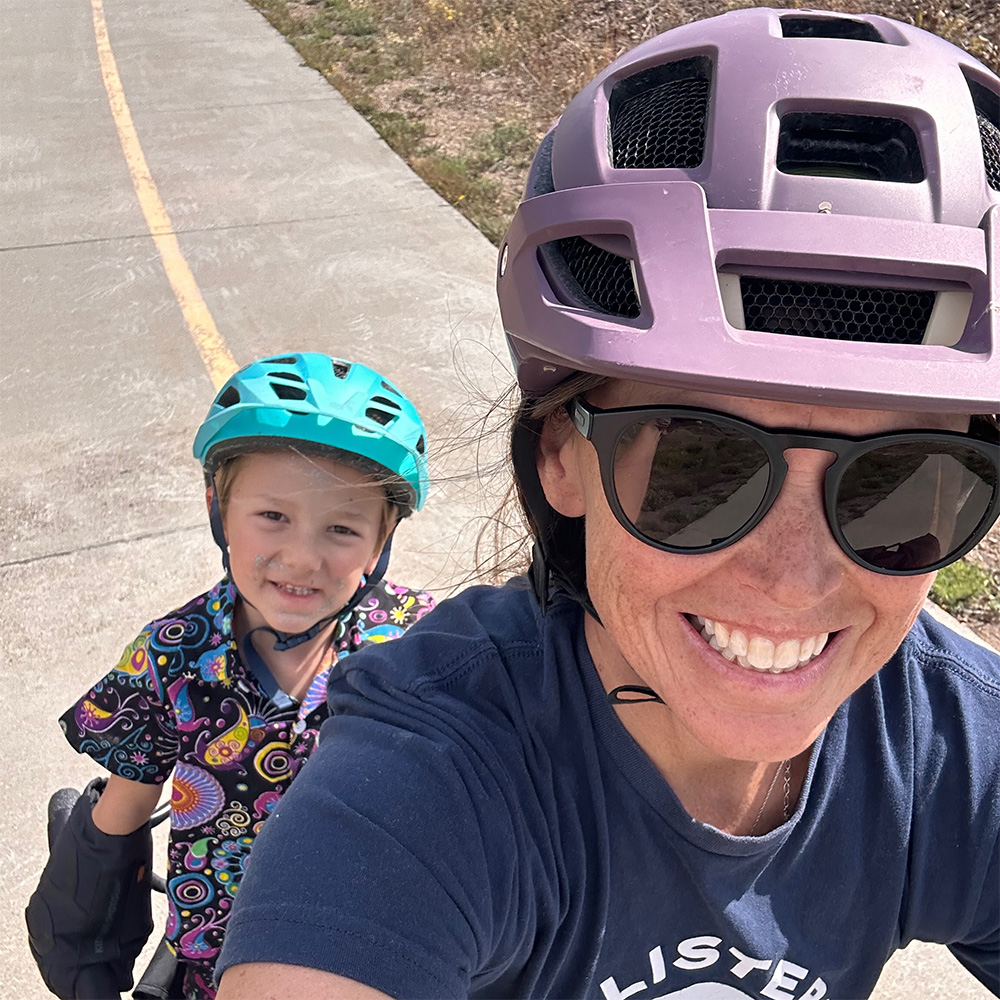
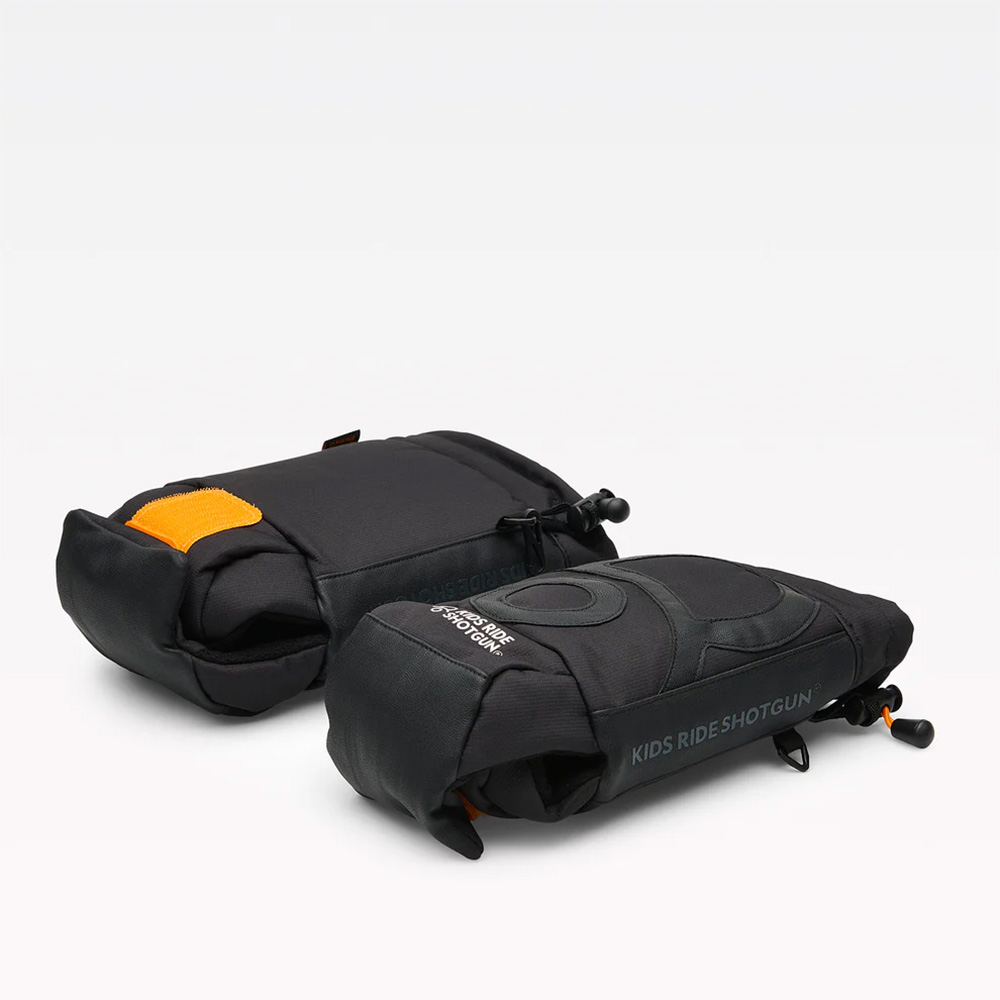
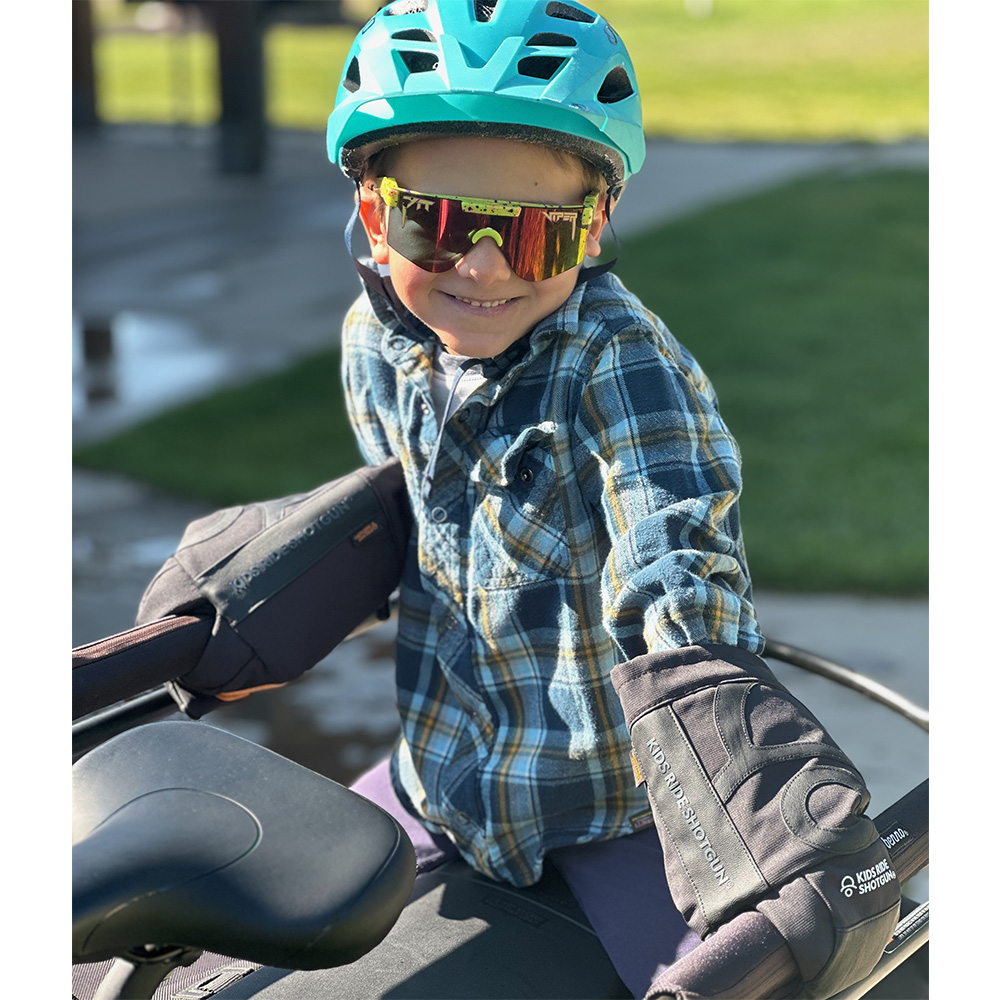
The Pogies attach with strong Velcro, and once secured, they stay in place. My son can easily grip the bars while using them, and because they’re mounted on a padded, insulated bar, he doesn’t notice any cold air seeping through. I’ve heard that if they’re mounted to bare metal bars, you’ll want thin gloves inside, but for us, no extra layers have been necessary.
The one-size-fits-all design works well for my 7-year-old, with some room to grow. For the shoulder seasons, the Shotgun Pogies have been the most effective solution we’ve found for keeping little hands warm and comfortable on the bike.
Beringia HAWL Bag
MSRP: $150
Jed Doane: The Beringia HAWL bag is a collaboration between Beringia and Swiss design house BMCO, and is a design over 10 years in the making. Unlike most other totes or gear haulers, it uses a snap system and straps to transform from a duffel bag to a wide-open 70 L tote. In my experience, this makes it a very useful option when traveling and has been a great snow gear hauler.
The HAWL bag was very useful during a winter trip to Hokkaido; I used it as a soft carry-on bag to hold my boots and other ‘can’t lose’ items on the plane. Once we arrived, it doubled as a very useful haul bag for schlepping gear to and from our car. When not in use, it packs down completely flat, and on the way home, I easily slipped it into my board bag. My only gripe is that the shoulder straps are not quite as long as I’d like when the bag is completely loaded, and are pretty thin. Overall, though, I’m very happy with the design.
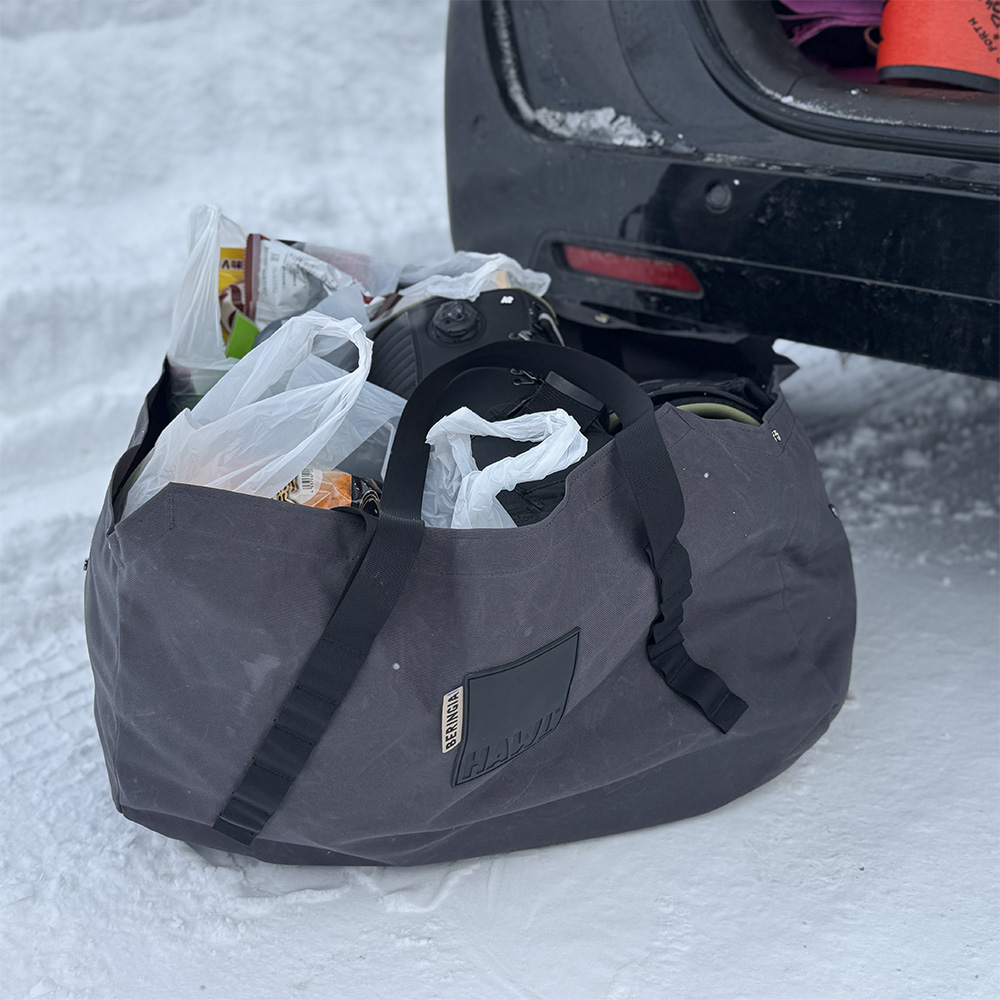
The HAWL bag is made from a 70D recycled polyester with DWR that has a supple feel compared to many stiff totes, but it holds its shape when packed full. It has a durable canvas feel on the outside, and has resisted the dirt and grime of parking lots, airports, and trailheads over the many months that I’ve used it.
FSA NS SiC Integrated Handlebar
MSRP: $320
Zack Henderson: I’ve been riding XC bikes more often lately, and while it’s not something I find myself using on a regular basis, I’ve gotten some quality time with the NS SiC Integrated Handlebar over the past month or two. I think it’s a pretty sweet option for folks who are looking for a particularly light handlebar setup on their XC race bike.
SiC is a fairly nondescript acronym that FSA uses for their integrated bar and stem options (it stands for “stable integrated cockpit”), and the NS SiC is the less expensive option in their lineup, alongside the KFX SiC.
The NS SiC comes in either 60 mm or 80 mm stem length options, with a -12° stem angle, 9° backsweep, and 5° upsweep. That backsweep is a bit more than I typically prefer, and the 760 mm width a touch narrower, but it works well on an XC race setup and jives well with the also longer-than-my-typical 60 mm stem length that I tested.
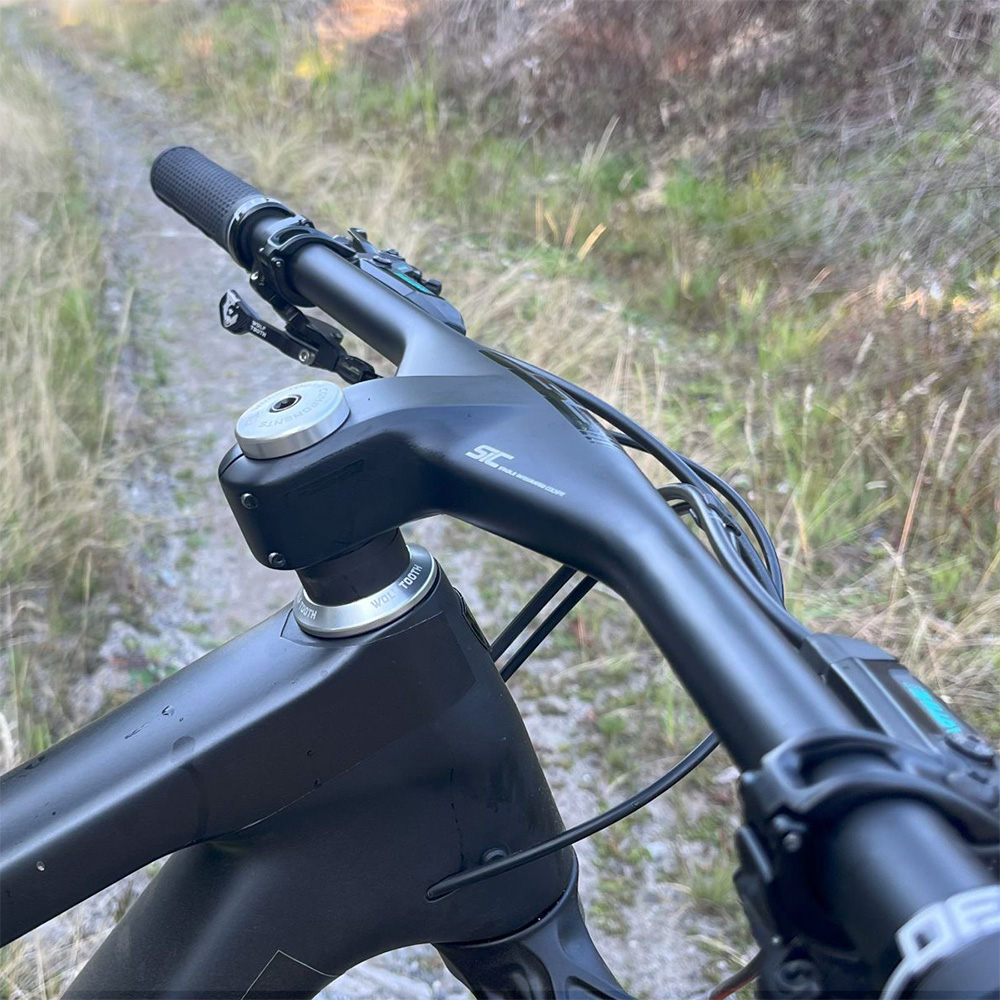
The main selling point here is that the NS SiC setup is damn light, at just 285 grams for the full setup in the 60 mm stem length version. It also comes with some other clever additions, though, like a suite of adapters that screw under the stem portion for integrating a computer, headlight, or GoPro. It also easily accommodates internal headset routing with some included custom stem spacers, if you’re into (or stuck with) that sort of thing.
As important as a lighter bike can be in XC racing, I can’t say I noticed the weight savings much — my Trek Top Fuel isn’t that lightweight to start with — but I did notice the more aggressive body position afforded by the negative stem rise, longer stem, and narrower bar. It clearly encourages an aggressive and efficient body position, and the setup also feels quite stiff and responsive in its handling, very much encouraging the sort of on-the-gas riding that XC competition requires. While I still prefer a standard cockpit setup for day-to-day riding, FSA’s NS SiC Integrated Handlebar will absolutely find its way onto my bike for periods of hard training going into a couple of XC races that I’m eyeing for next year.
La Sportiva Aequilibrium Trek
MSRP: $289
Luke Koppa: Earlier this summer, I talked about my initial experience with La Sportiva’s Aequilibrium Hike, a lightweight hiker inspired by their more mountaineering-oriented Aequilibrium models. Since then, I also started testing the Aequilibrium Trek, which shares a very similar overall design, but it’s a bit taller, a tiny bit stiffer, and features a leather upper instead of synthetic.
I’ll be doing a longer-form review of both later this fall, but for now, I wanted to note a few things.
First off, I’ve concluded that I’m better off sizing up a half size with these boots. My feet measure 26.5 cm long by ~100 mm wide (10.4” x 3.9”), and I usually wear a US Men’s size 9.5 or 10 for hiking shoes and boots. I’ve been testing the Aequilibrium Hike in a size 42.5 / US Men’s 9.5, but I opted for the size 43 / US Men’s 10 in the Aequilibrium Trek, and that was the right call. In a 42.5, the ends of my toes would occasionally contact the front of the toe box on steep downhills; in a 43, this hasn’t been a significant issue.
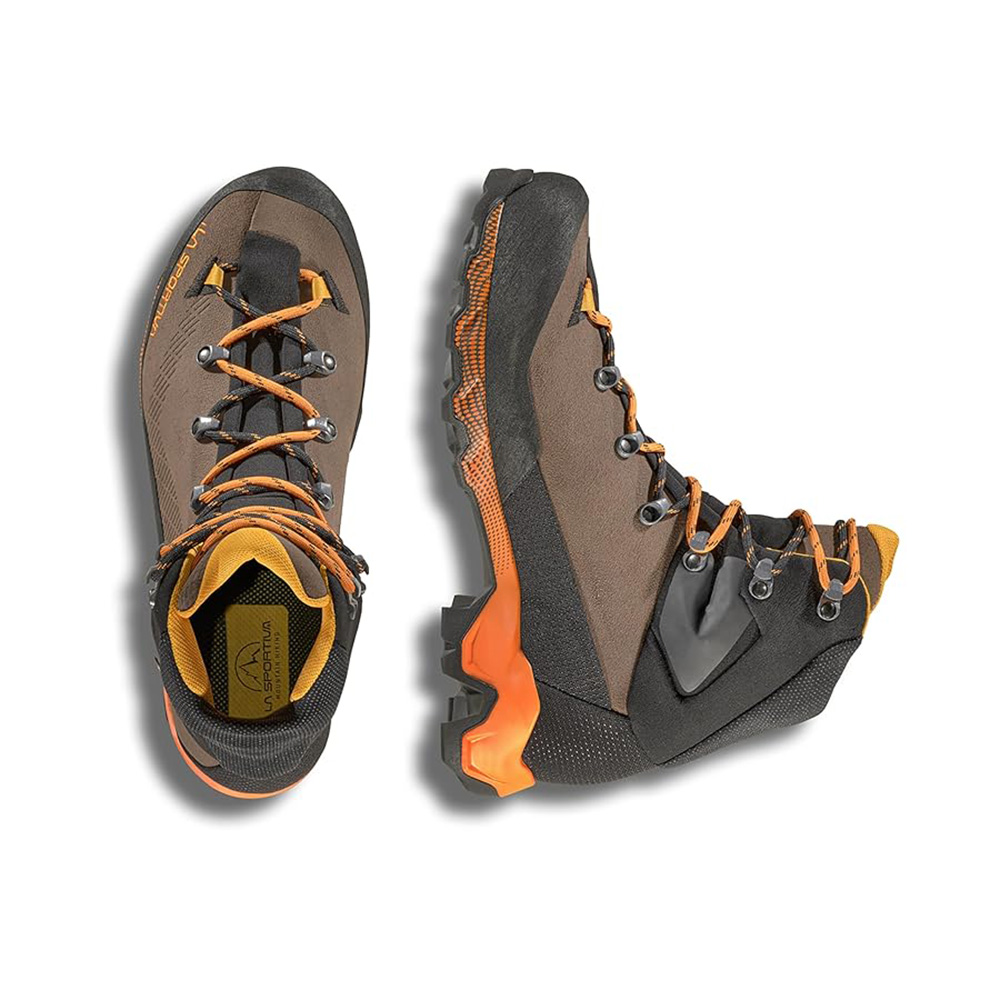
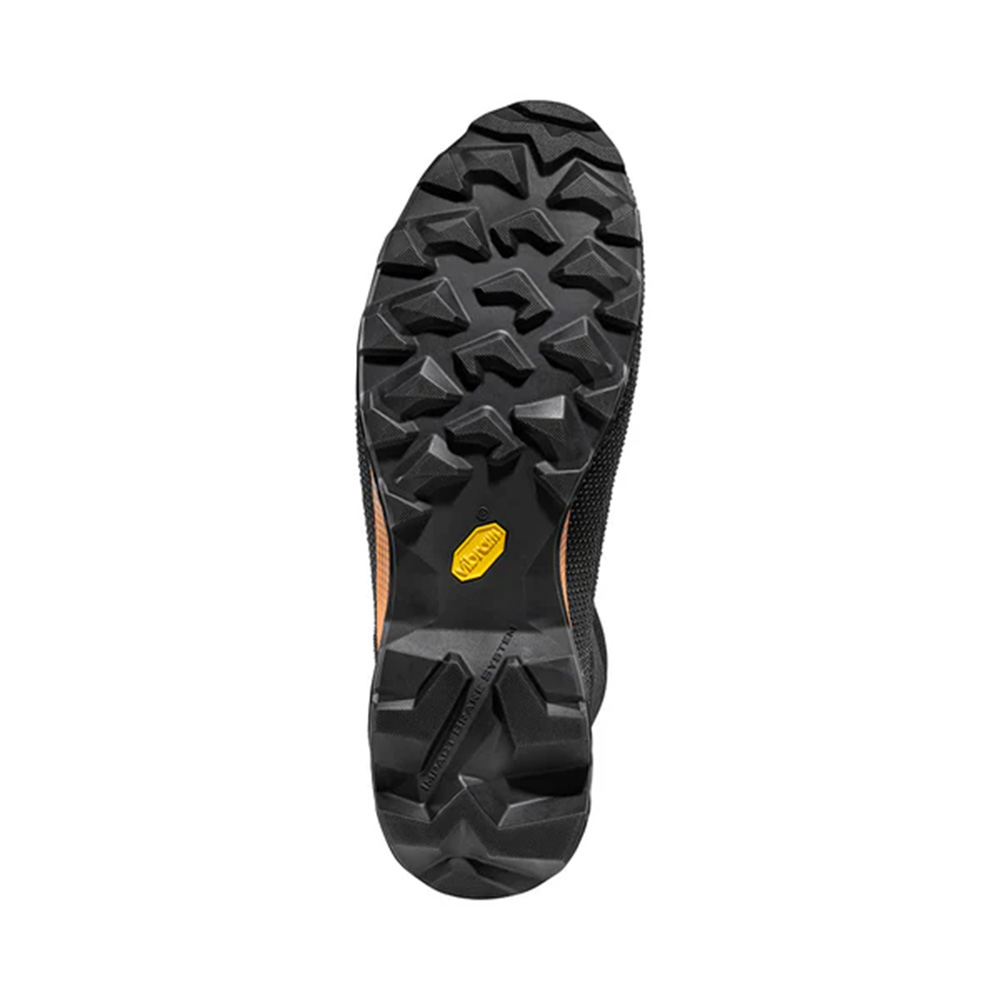
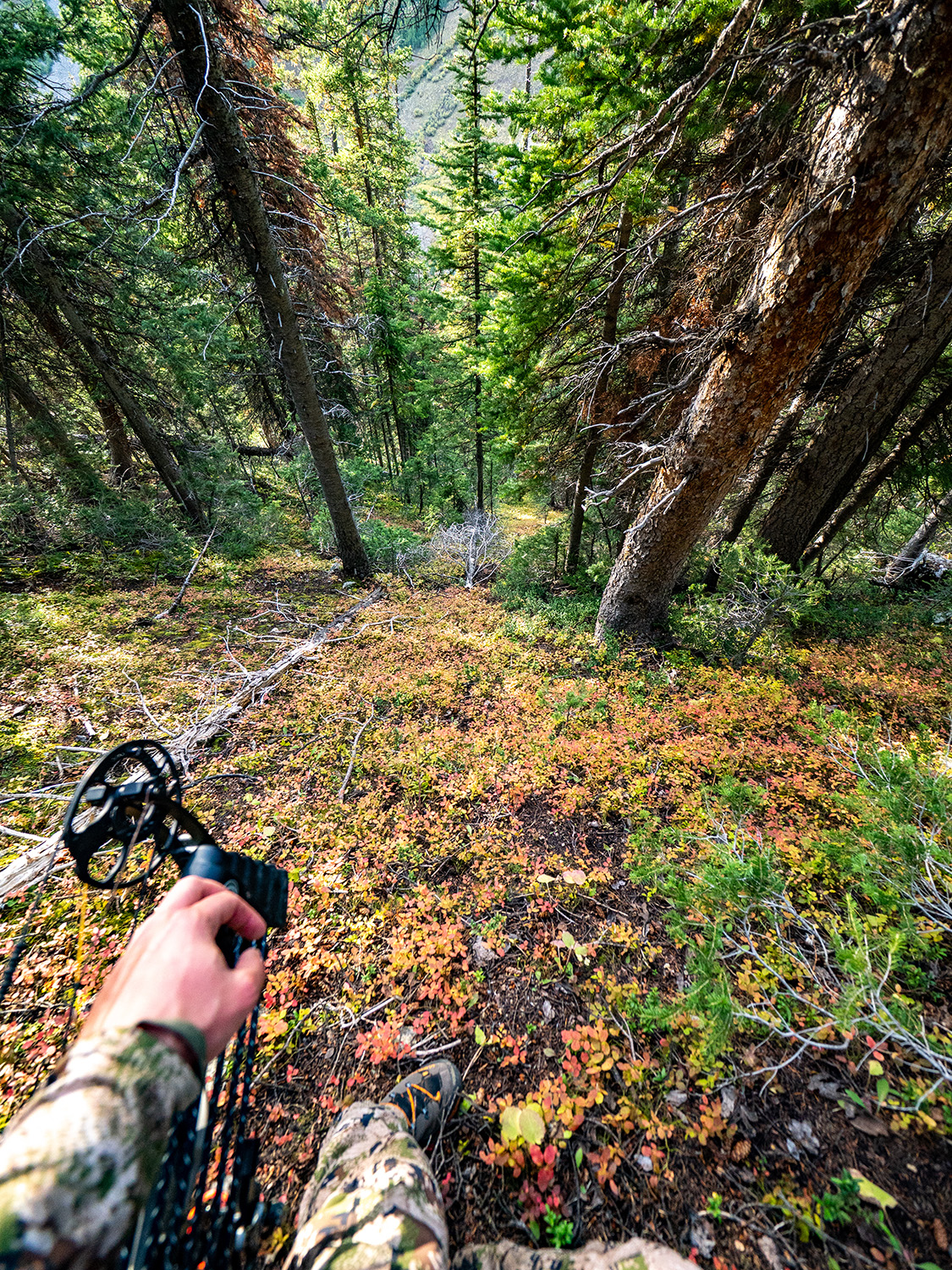
Fortunately, even in a half-size bigger, the Aequilibrium Trek has still displayed the same standout heel-hold and precise ankle fit as I experienced in the Aequilibrium Hike. I’m a huge fan of this, since most of my hiking involves a lot of off-trail travel in very steep terrain. I prefer a soft and light trail runner for most on-trail outings, but my priorities for off-trail excursions include grip and stability on variable, off-camber surfaces, as well as a midsole that’s stiffer than a trail runner but not so stiff that the boot can’t conform a bit to the ground. The Aequilibrium Trek and Hike have been ideal in those regards.
Despite how secure my ankle / heel feel in these boots, I have yet to experience significant pain around the widest point of my midfoot (a common problem for me). This has been true even with a ~50-lb (23 kg) backpack, and when doing several days in a row of ~8 mile (13 km) hikes mostly off trail.
As for the Hike vs. Trek, they’re far more similar than they are different. The synthetic-upper Hike dries a tad quicker and the higher-cut Trek offers a tad more support around the ankle and lower leg. The Trek is a touch stiffer, but it’s very subtle — both flex a tad stiffer than the Salomon Quest boots I’ve tested but much softer than a mountaineering boot (e.g., the original Aequilibrium LT). If you’re deciding between the Aequilibrium Hike and Trek, I’d just focus on their differences in height and upper material. So far, both have held up great to approximately ~200 miles / 321 km of hiking through some properly rough country.
Again, I’ll have more to say in the future, but for now, I wanted to note that I think the Aequilibrium Trek and Hike are very interesting options for those who want a lightweight hiker that excels in more challenging terrain and conditions. They wouldn’t be my top pick for smooth trails (overkill) or super wet conditions (only scenario where I haven’t loved their outsoles). But they’ve been excellent partners while covering a lot of miles and vert across dry rock, off-camber high-alpine meadows, and all sorts of other high-country travel in Colorado.
Salomon Pulsar
MSRP: $140
Jed Doane: With my narrower feet, I’ve been drawn to Salomon’s footwear line over the years. My last shoe from them, the Sense Ride 5, was a solid option, but I’ve been running longer distances and wanted to try a more cushioned shoe. Enter the new Pulsar, which uses a foam midsole to deliver “exceptional propulsion and cushioning” according to the brand.
I’ve tested the Pulsar on a variety of run distances in the Northwest and the Tetons this fall, from flat wooded trails to rocky switchbacks and high-alpine scrambling. In my experience, the Pulsar manages to maintain good enough cushioning for 10-15-mile runs on rocky terrain while still feeling nimble and responsive. Breathability is another strength of this shoe. The mesh upper kept my feet cool and comfortable even on hot, sunny climbs. One tradeoff is that the ventilation is so open that fine dust and grit can sneak in, and it’s very easy to get wet. On one dewy morning, my feet got damp earlier in the day and this later led to blisters (though it’s unclear if this was directly related to the Pulsar’s very open ventilation).
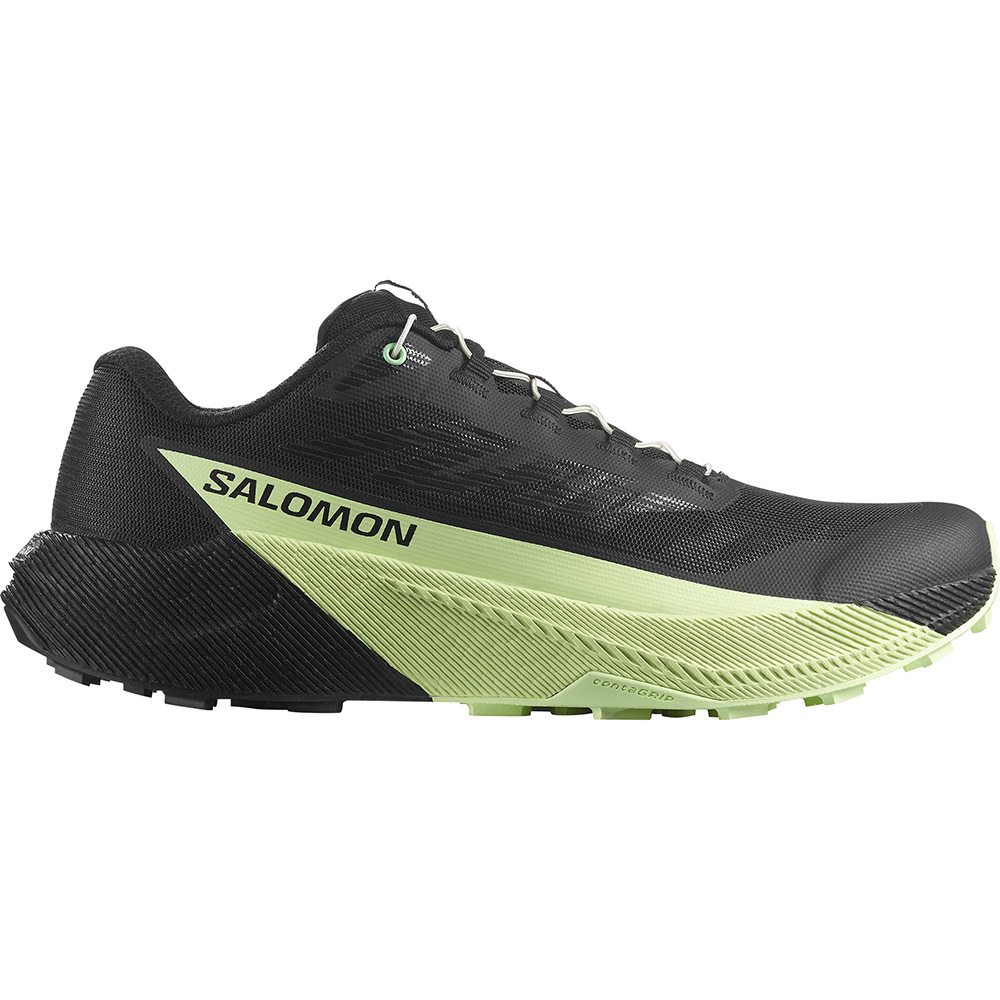
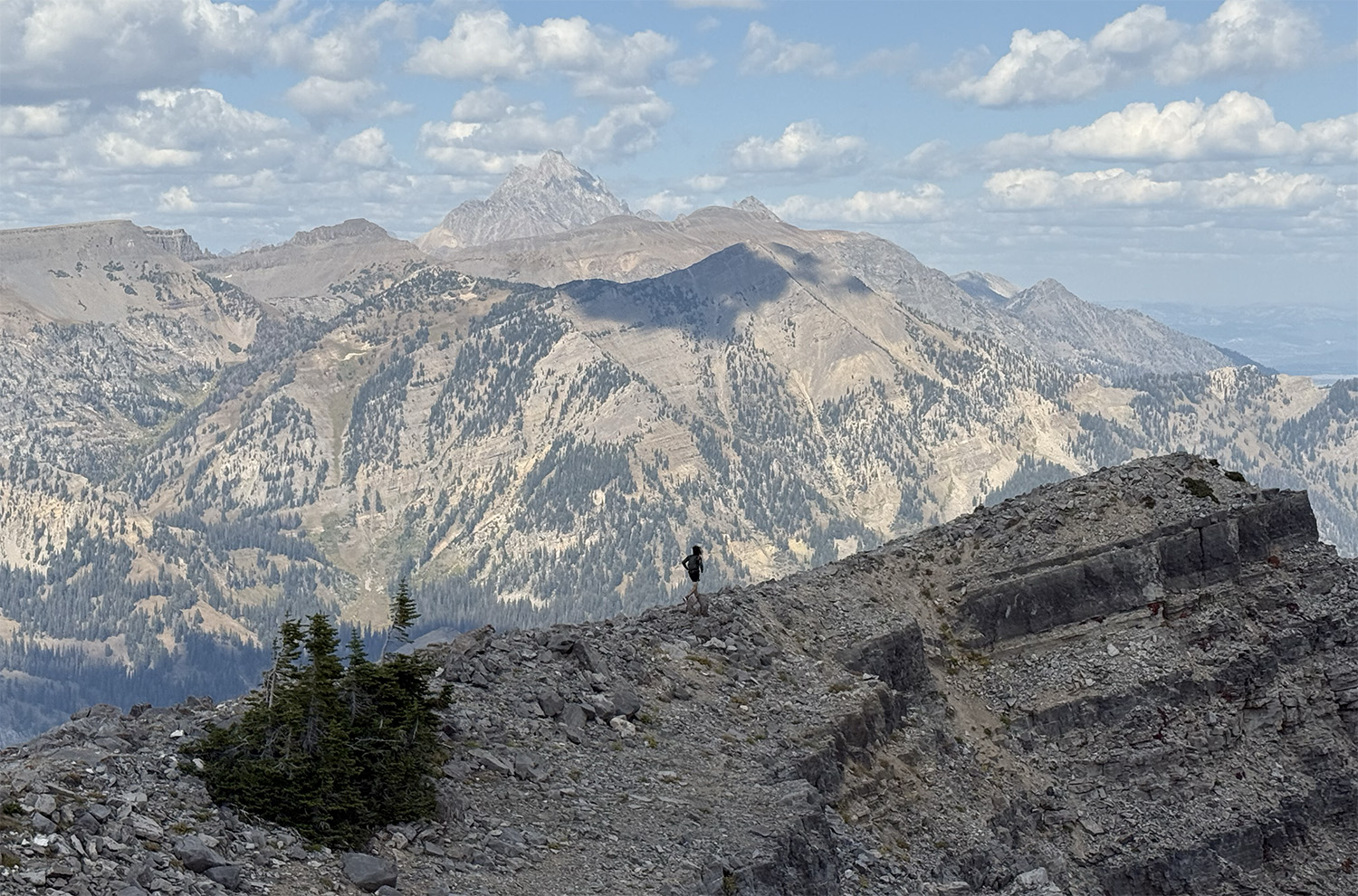
The Pulsar’s fit was excellent for my narrow feet. Salomon’s signature Quicklace system cinched down fast and stayed locked through sidehills, boulder hopping, and steep downhills. The shoe felt precise and secure when scrambling, and I also felt like I had some adjustability on the forefoot vs. ankle. As usual, I paired the Pulsar with my Superset running insoles, which fit well.
Overall, the Salomon Pulsar is a cushioned, breathable, and performance-driven trail shoe that excels on long mountain runs. It’s become my go-to for bigger days.
Thermarest NeoAir XLite NXT MAX Sleeping Pad
MSRP: $229–$249
Luke Koppa: This summer and fall, I’ve been testing a variety of hiking and backpacking gear, including some of what I’d consider the industry reference points in the all-season, ultralight sleeping pad category.
Thermarest’s NeoAir series has long been the go-to choice for a lot of weight-conscious backpackers, and I was curious to try the latest NeoAir XLite NXT MAX. As a side sleeper, I’m drawn toward thicker pads like this one (3” / 7.6 cm), and I typically prefer a rectangular pad (Thermarest also offers a mummy-shaped, non-MAX version of the NeoAir XLite NXT).
Overall, I’m a big fan. This pad’s stated R-value of 4.5 has so far kept me plenty comfortable in nighttime temps ranging from 30°F / -1°C to 60°F / 15°C, and it offers a lot of cushion for its low weight (19 oz / 540 g for my size Regular Wide). Its “WingLock” valve has been easy to inflate, micro-adjust, and deflate, and it comes with a pump sack for those who prefer one.
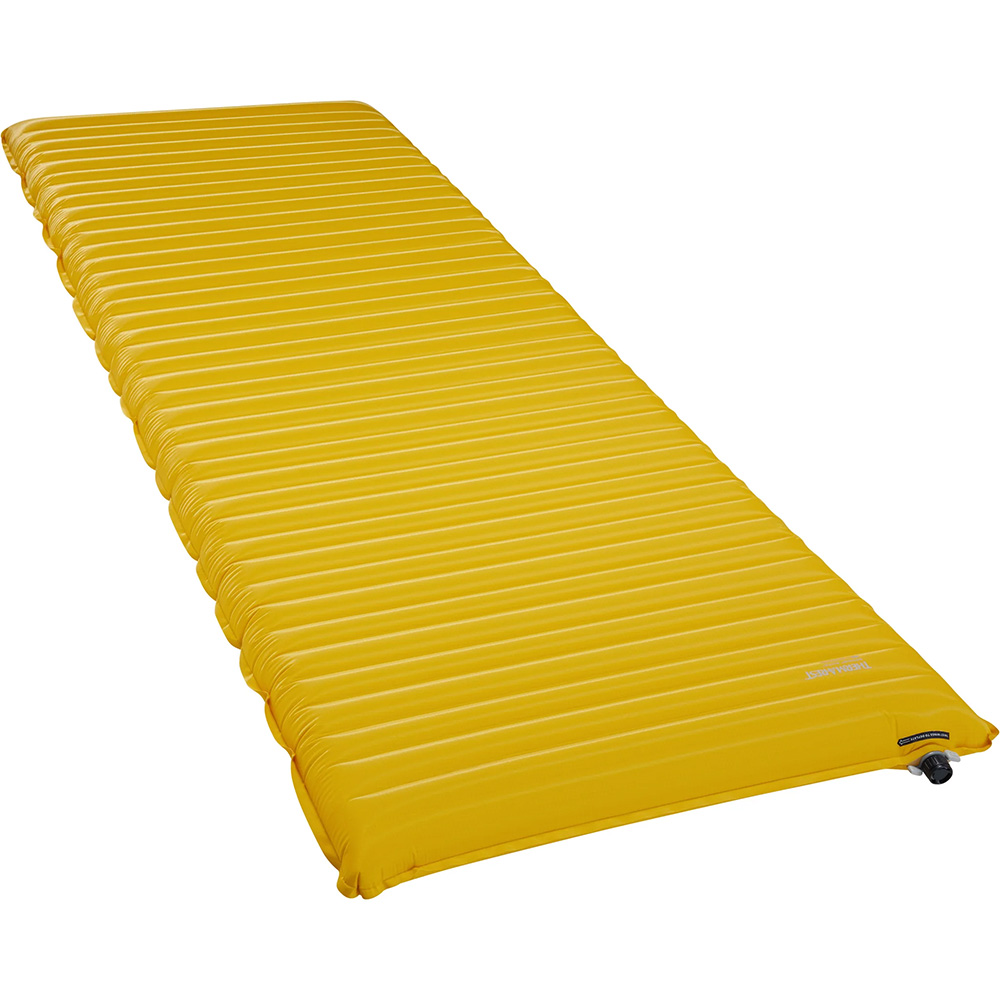
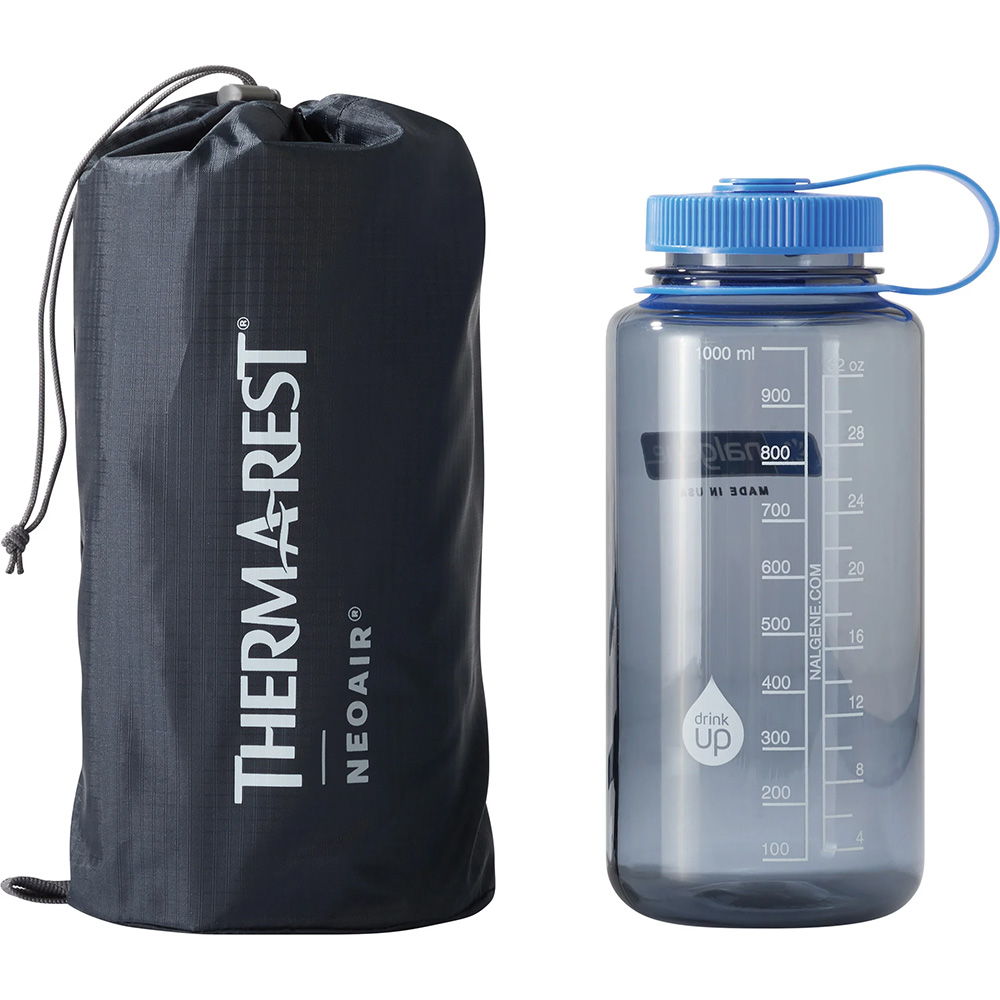
The ability to micro-adjust the air inside the pad is a feature I’ve come to further appreciate lately. After many years on pads that were too thin or didn’t hold air completely reliably, my go-to approach had become to inflate the pad as much as possible. But with this one, I’ve noticed that I end up with a more comfortable experience if I do that and then let a bit of air out. Doing so, I keep my hip off the ground but can still ‘sink’ into the pad a bit, resulting in a more plush and stable platform.
I’ve been testing it back-to-back against the Nemo Tensor All-Season Ultralight, and so far, my broad-level take is that they’re both excellent. They’re extremely similar in terms of weight and packed size, and I haven’t noticed a difference in my quality of sleep. The Tensor is just a tad quieter, but I can’t notice that difference once I’m in my sleeping bag / quilt. Overall, I think they’re both extremely impressive for the weight, and they’ve both helped me get some of the best backcountry sleep I’ve experienced.
COROS Nomad GPS Watch
MSRP: $349 USD
Zack Henderson: I like to track my rides, runs, and hikes, and while I’ve been wearing the excellent COROS Pace 3 for a couple of years now, the COROS Nomad has proven to be a better match for my needs for a whole bunch of reasons.
The Nomad is a bigger watch than the Pace 3, but it’s still quite light for its burly build, at 61 grams. I also happen to like the look of its bigger, chunkier build for everyday wear. While it does jostle around on my wrist a bit on rougher mountain bike trails, I’ve never had any issues with discomfort or wrist bruising, unlike some heavier watches I’ve had in the past.
The Nomad is a pretty feature-heavy watch, but it still hits the more affordable price point and very, very long battery life that COROS has become known for. COROS claims 22 days of battery life without GPS use, 50 hours in my most-used “All Systems GPS” mode, and 34 hours in the extra-accurate “Dual Frequency GPS” mode.
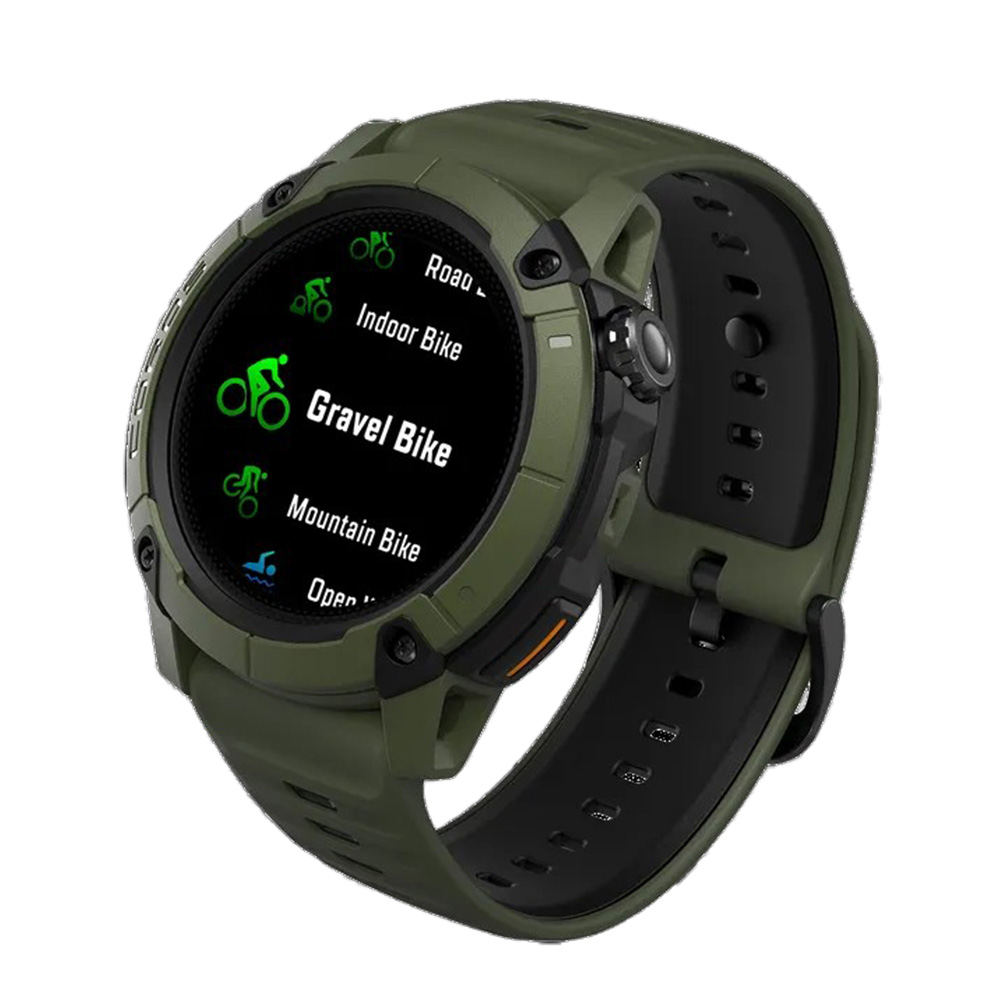
That’s quite a bit, and while my Pace 3 watch claimed 24 days of daily use and 38 hours with GPS enabled, I find that the Nomad seems to last closer to twice as long as the Pace 3 for my use cases. The Nomad’s GPS functionality also appears to be more accurate, staying well on track even in the sorts of denser trees that could give the Pace 3 a hard time.
The Nomad also comes with a lot more activity modes than the Pace 3, and has real-time weather and tide data. The navigation function also allows upload and tracking of routes across global maps. Two of the big features not particularly relevant to me are the fishing function, which allows logging of catch details and associated environmental data, as well as COROS’s new voice pin feature, which allows recording voice pins at particular points of interest as a way of logging experiences along a trip or workout. While I’ve tried the voice logging feature and found it very easy to use, I’m usually just recording workout data rather than creating adventure logs.
Overall, I’m quite pleased with the Nomad as a more general-purpose GPS watch for outdoor sports. It looks good, the battery lasts exceptionally well, and the GPS functionality is both accurate and intuitive. It’s a high-value, high-performance watch that I expect a lot of folks to really enjoy.
Orvis Guide Hip Pack
MSRP: $179
Jed Doane: I’ve always used sling packs while fly fishing, but with an annoying shoulder injury, I decided to switch to a hip pack. This burly and versatile option from Orvis has been great. Nine liters is just about perfect for an afternoon on the water, and the Guide Hip Pack carries weight well. Even fully loaded with multiple fly boxes, lunch, and a rain jacket, the pack was comfortable on my waist without sagging. It comes with two separate shoulder strap attachments; I found the minimalist option to be sufficient.
Organization is another strong suit of this hip pack. Orvis struck a nice balance between accessibility and simplicity; there are enough compartments to keep gear sorted, but not so many that I was fishing around blindly. The Internal sleeves were appropriately sized to fit bigger fly boxes, and I especially appreciated the Tippet Whippet, which makes tippet easily accessible and keeps tippet changes quick. The Guide Hip Pack’s zippers were functional and well-placed, pockets were appropriately sized, and each padded hip strap has a slot to hold a net, which is a thoughtful design addition.
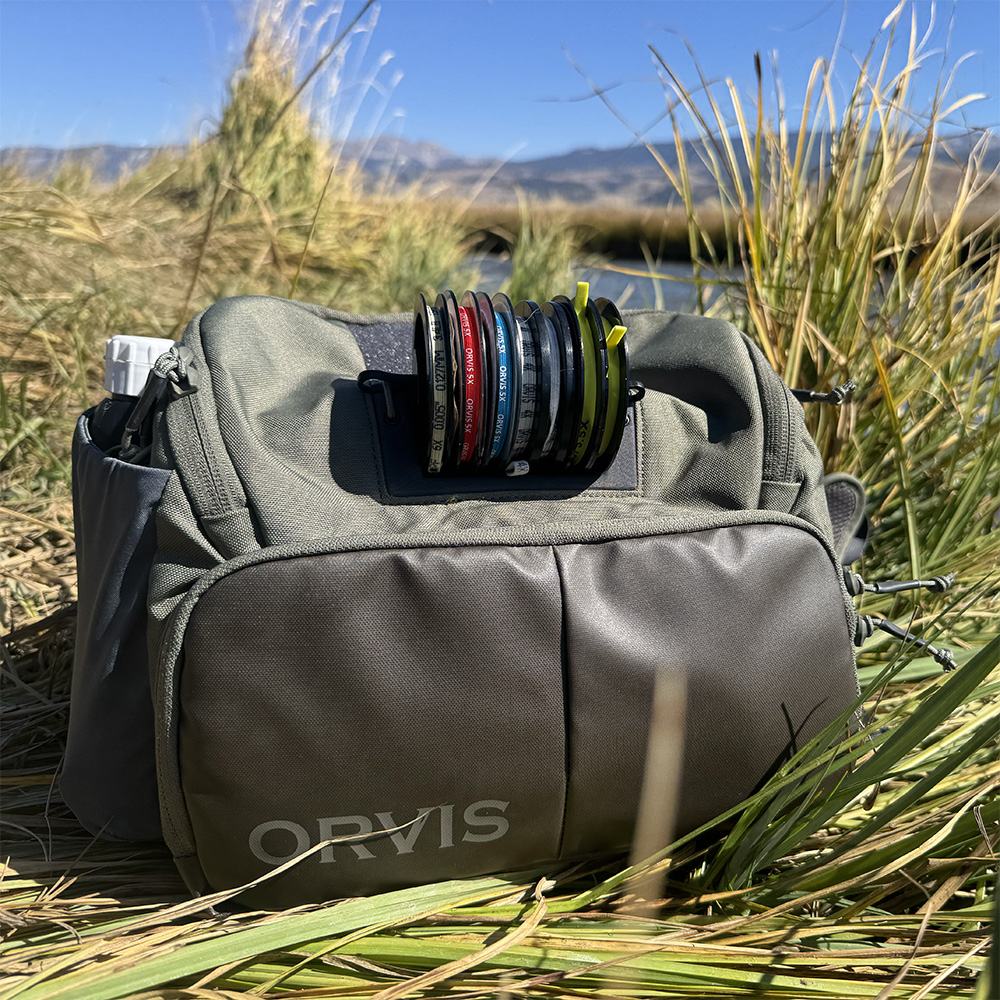
On one trip, I managed to dunk the pack while trying to rescue a snagged fly from the opposing bank, and to my surprise, none of my gear inside showed any water damage. It’s not a fully waterproof pack, but the water resistance was reassuring when wading deep or fishing in unpredictable weather.
Overall, the Orvis Guide Hip Pack is a durable, feature-packed, and versatile fishing pack that’s low-profile and easy to use. It’s my new daily driver for shorter days on the river.




Ikea Bag 4-EVER